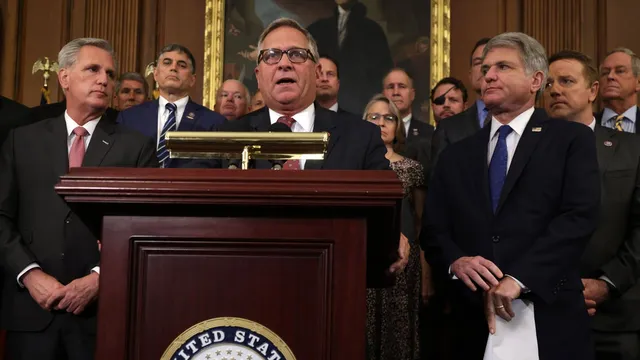
Supreme Court to consider Illinois absentee ballot challenge by Congressman Mike Bost
2025-06-02 17:51- The Supreme Court will hear an appeal from Rep. Mike Bost challenging an Illinois law allowing late mail ballots to be counted.
- Bost's claim is based on the assertion that this law violates federal election standards.
- The case's outcome could shape future regulations surrounding mail-in voting in several states.
Express your sentiment!
Insights
In the United States, the Supreme Court agreed to consider a significant legal challenge concerning absentee ballot counting in Illinois. This appeal, initiated by Illinois Rep. Mike Bost, focuses on a state law that permits mail ballots to be counted if they are postmarked by Election Day and received up to two weeks after. Bost, a Republican congressman, filed the lawsuit in 2022, arguing that the Illinois law contravenes federal regulations that mandate a uniform election day. Lower courts ruled that Bost and the other plaintiffs lacked standing to sue because they did not demonstrate direct harm from the law. The case has gained attention due to its implications for federal election integrity and the broader context surrounding mail-in voting, especially amid political debates. The original ruling by a federal district court stated that Bost, having won re-election with a significant margin and choosing to allocate resources for ballot monitoring, could not claim injury from the Illinois law. The 7th Circuit Court of Appeals upheld this decision, affirming that speculative concerns about future electoral impacts did not provide a legitimate basis for suing. Rep. Bost has emphasized the potential consequences of allowing late-arriving ballots, which he and other Republicans argue undermine public confidence in election outcomes. This case mirrors similar litigation in other states as various Republican leaders challenge expanded access to mail-in voting post-2020 elections. The Supreme Court’s decision to take up this case could set a precedent regarding the standing of candidates to contest state regulations governing federal elections and might further reinforce or curtail mail-in voting practices nationwide. The Supreme Court is expected to hear arguments in the upcoming fall sessions. Given that approximately 18 states, including Illinois, allow ballots to be counted beyond Election Day if postmarked correctly, the outcome of this case could impact voting procedures significantly. Furthermore, President Donald Trump's administration previously criticized late ballot counting, advocating for stricter adherence to Election Day deadlines, which may also influence the Court's considerations.
Contexts
Mail-in voting in the United States has a rich and complex history that reflects the evolving democratic processes of the nation. The practice has its roots in the 19th century, initially adopted for military voters during the Civil War, enabling soldiers to participate in elections despite being away from their home precincts. This was a significant step towards inclusivity, as it recognized the sacrifices of those serving the nation. As the years progressed, various states began to experiment with mail-in voting, reflecting their particular needs and populations. By the late 20th century, technological advancements and rising demands for voter accessibility further fueled the expansion of mail-in ballots, which were seen as a means to enhance voter participation and make the electoral process more convenient for citizens unable to vote in person due to various constraints. The 2000 presidential election marked a turning point for mail-in voting in the U.S., as the aftermath highlighted the need for more reliable voting systems. States began to adopt more systematic approaches toward mail-in voting, and confidence in its reliability significantly increased. The 2008 election saw a notable rise in mail-in voting, particularly among young voters and those from underserved communities. However, concerns over security, fraud, and the integrity of elections loomed large, prompting debates that continue to this day. Many advocates argue that mail-in voting increases turnout and ensures that every vote is counted, while critics cite potential vulnerabilities in the system. The COVID-19 pandemic, which struck in early 2020, acted as a catalyst that accelerated the shift towards mail-in voting across the nation. Due to health concerns and the necessity of social distancing, many states expanded their mail-in voting options, allowing voters to request mail ballots more easily than in past elections. This expansion saw a historic number of Americans using mail-in ballots in the 2020 presidential election, with millions successfully casting their votes via mail. The unprecedented scale raised both praise for the adaptation of the electoral process and scrutiny regarding how changes might impact voting security and verification processes. In the post-pandemic era, mail-in voting remains a contentious issue in American politics, with ongoing discussions about legislation to standardize mail-in voting practices across states. Proponents of secure mail-in voting stress how accessibility can lead to greater voter turnout, especially among those facing barriers to in-person voting, while opponents continue to voice concerns over the potential for fraud and administrative challenges. As states navigate these discussions, it is evident that mail-in voting will continue to play a critical role in shaping the future of American elections, underscoring its significance in a democracy that seeks to present opportunities for all its citizens to exercise their fundamental right to vote.